

Artist: Copyright © Rasmus Holbroe (Jan. 2016).
|
1. Two players, the king's side vs attackers. There are twice as many attackers as defenders.
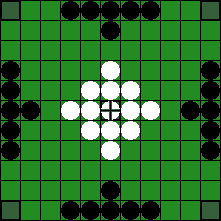
Initial set-up.
2. The attackers' side moves first, the players then take turns.
3. All pieces move any number of vacant squares along a row or a column, like a rook in chess.
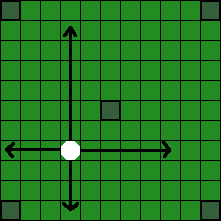
Moving a piece.
A piece is only captured if the trap is closed by the aggressor's move, it is therefore permitted to move in between two enemy pieces.
The king may take part in captures.
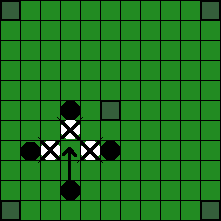
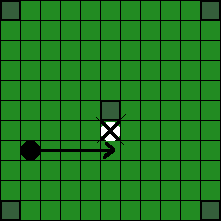
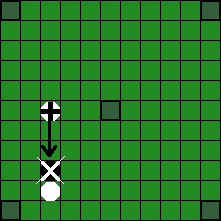
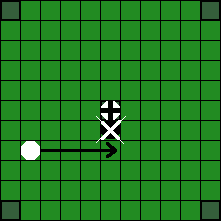

Capture of pieces.

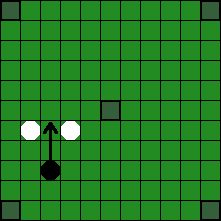
The piece is not captured.
4b. The shieldwall rule for capturing a row of pieces on the board edge: A row of two or more taflmen along the board edge may be captured together, by bracketing the whole group at both ends, as long as every member of the row has an enemy taflman directly in front of him. A corner square may stand in for one of the bracketing pieces at one end of the row.
The king may take part in the capture, either as part of the shieldwall or as a bracketing piece. If the king plus one or more defenders are attacked with a shieldwall, the attack will capture the defenders but not the king.


Shieldwall captures.
See also Doctor Crustus explains shieldwalls (Tim Millar).
Restricted squares are hostile, which means they can replace one of the two pieces taking part in a capture. The throne is always hostile to the attackers, but only hostile to the defenders when it is empty.
The four corner squares are also restricted and hostile, just like the throne.
The board edge is NOT hostile.
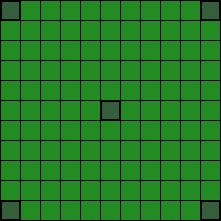
Five restricted squares.
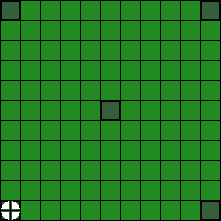
6b. Exit forts:
The defenders also win if the king has contact with the board edge, is able to move, and it is impossible for the attackers to break the fort.


Exit forts.
The king is captured when the attackers surround him on all four cardinal points, except when he is next to the throne.
If on a square next to the throne, the attackers must occupy the three remaining squares around him.
The king cannot be captured on the board edge.
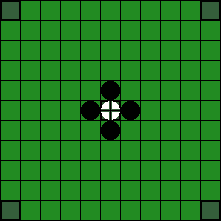
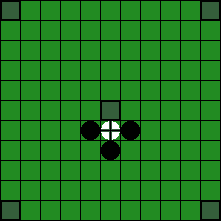
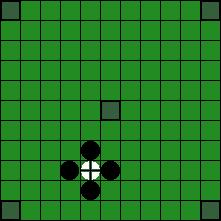
The king is captured.


The king is not captured.
7b. If the attackers surround the king and ALL remaining defenders, then they win, as they have prevented the king from escaping.
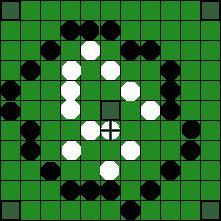
The attackers win by encircling all defenders.
9. If a player cannot move, he loses the game.
10. If it is not possible to end the game, fx. because both sides have too few pieces left, it is a draw.
|
Some examples of perpetual repetitions. Perpetual repetition - the king must find another move:  White is confined and cannot avoid perpetual repetitions and lose: 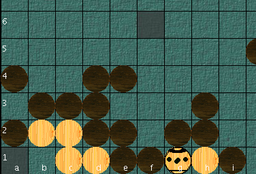

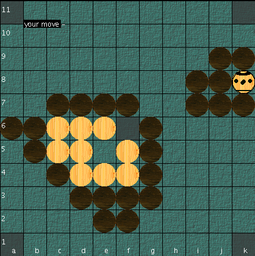
|
The Copenhagen rules were outlined 2012 by Aage Nielsen (Denmark), Adam Bartley (Norway) and Tim Millar (UK).
English text and diagrams: Adam Bartley (Norway).